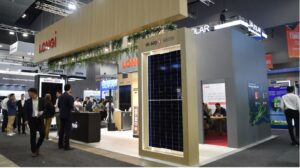PRESS RELEASE
With an estimated two million new homes to be built in Victoria between now and 2050, Sustainability Victoria has released a new six-step guide to help Victorians design and construct energy efficient homes.
Sustainability Victoria CEO Stan Krpan said that “Victoria is adding 2800 people a week to its population. This growth means new homes, renovations, alterations or additions.”
“Making the influx of new homes more energy efficient is one of the biggest, most readily available and untapped opportunities to significantly cut energy use and greenhouse gas emissions.”
“Home owners, designers, builders, thermal performance assessors and councils now have access to six plain-English concepts and design guidelines to comply with the National Construction Code’s 6 Star regulations, exceed minimum standards and reduce construction costs,” Mr Krpan said.
The Energy Smart Housing Manual explains how best to position a house on a block of land, how windows affect energy efficiency, the benefits of insulation and thermal mass, and how to control unwanted air leakage to save energy. The manual also covers Victoria’s climate zones and how they affect a home’s heating and cooling requirements.
Importantly, the manual provides guidance on how to site your house to protect access to the sun and roof surfaces year-round for Solar Hot Water and Photovoltaic panels.
“Sustainability Victoria is the first place to go for advice of energy efficiency, including utilising solar power. Householders have shown a huge interest in finding out more about solar power recently, including those keen to take up the Solar Victoria rebates announced in August.
“As Solar Victoria sits within our business, we are well placed to assist people in stepping towards energy efficiency and lower bills.”
“By using the concepts in the Energy Smart Housing Manual, Victorians can boost energy efficiency and ensure lower energy bills for the present and well into the future,” said Mr Krpan.
“This will help to create a legacy of high quality housing that will contribute to a better built environment and to meeting the Victorian Government’s 2050 zero net emissions target,” he said.
This manual is an updated version of the 2002 edition. More information on improving household energy efficiency in new or existing homes can be found at www.sustainability.vic.gov.au/









